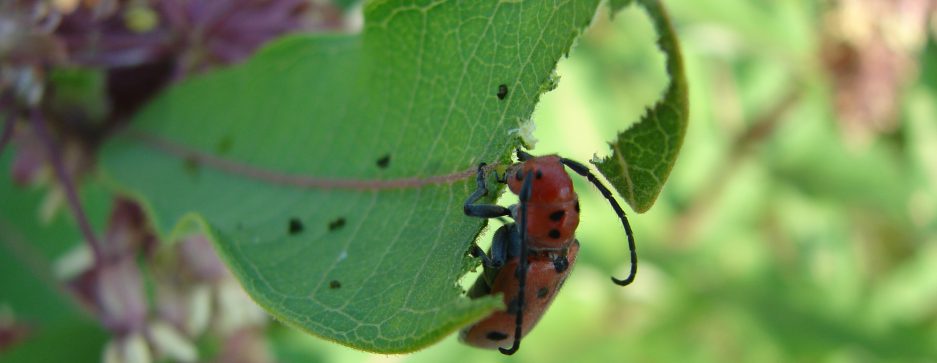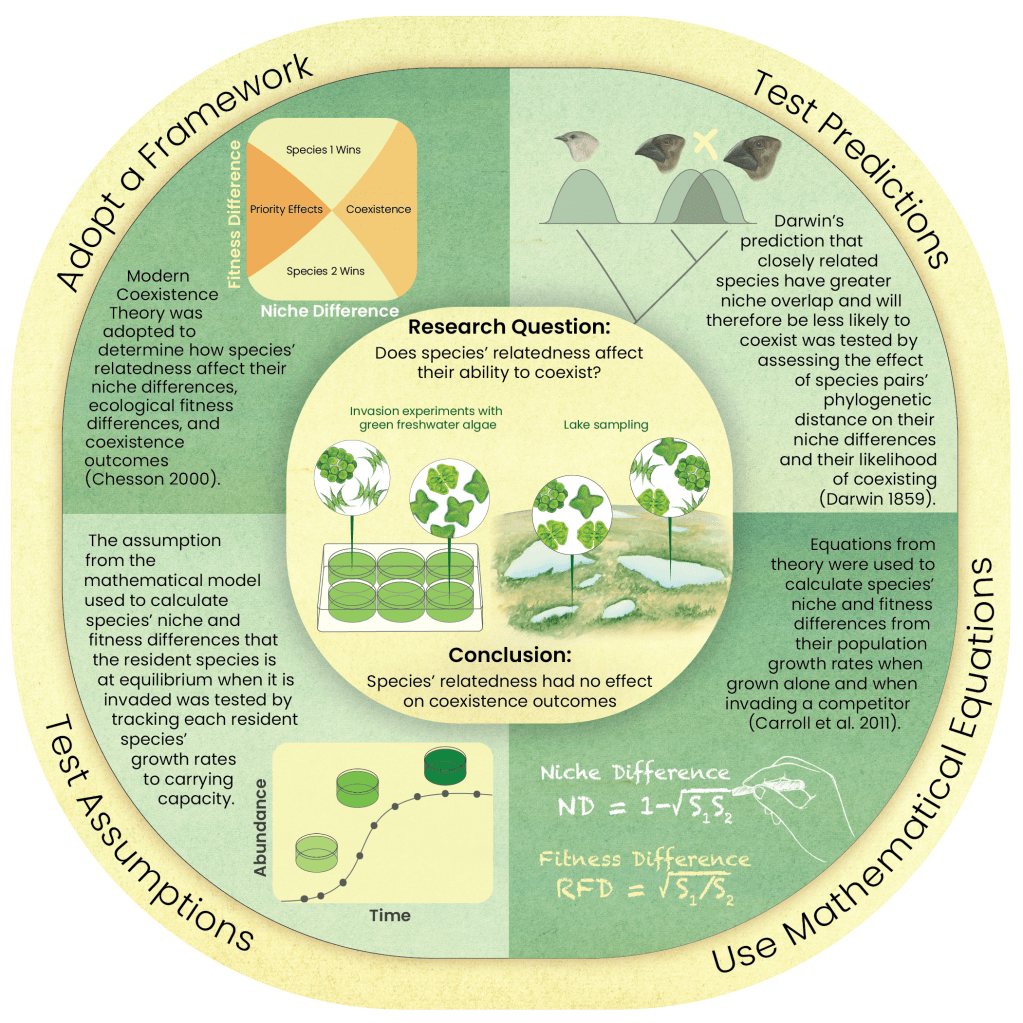Eco-evolutionary responses to global change
Due to the ongoing impact of humans on the natural world, ecological communities are increasingly faced with new and shifting environmental conditions. Species can respond to these global changes ecologically, for example by altering when they emerge or reproduce, or evolutionarily, by adapting to new conditions. We’re interested in understanding the interactions between species’ ecological and evolutionary responses to global changes such as warming, invasive species and habitat fragmentation. We use experimental evolution in the lab and field as well as data synthesis to answer questions like:
How does competition affect species’ ability to tolerate and adapt to stressful climatic conditions?
Are there general trends across taxa in how life history traits evolve in response to climate change?
How does temperature affect species’ ability to rapidly adapt to deteriorating environmental conditions?
Can we use metabolic theory to understand and predict ecological and evolutionary responses to climate change?
Coexistence and competition
Ecologists have long been interested in figuring out how so many competing species can coexist. Modern Coexistence Theory is a powerful framework for understanding how competitive interactions lead to either coexistence (when both species can invade an established population of its competitor) or competitive exclusion (when only one species can invade) (Chesson 2000). But this framework has the potential to do a lot more than that! We’re interested exploring how coexistence theory can integrate a broader range of competitive outcomes and be applied to questions beyond local coexistence. This research addresses questions like:
Can coexistence theory be used to understand species’ range limits and invasive species?
How does temperature affect coexistence?
Can priority effects and facilitation be incorporated into coexistence research?
How do human-caused changes in environmental conditions alter coexistence outcomes?
The role of timing in community assembly
As species move across a landscape of habitat patches, arriving first at a local patch can offer advantages. This idea that largely random arrival order can shape how ecological communities are assembled (“priority effects”) is a departure from classic ecological thought and is sometimes overlooked in a field focused on more deterministic outcomes. We use experiments that combine insights from priority effects research and other theoretical frameworks to address questions like:
Are priority effects confined to certain unique systems, or are they widespread in nature?
How do we build a cohesive framework for understanding the role that timing plays in shaping biodiversity?
How does temperature affect the importance of arrival order for competitive outcomes?
Dispersal and diversity in patchy landscapes
Many species rely on patchily distributed resources such as ponds or host plants, and dispersal between these habitat patches is thought to promote diversity of the species that inhabit them. We’re interested in understanding how local within-patch dynamics and dispersal jointly drive species diversity, and how global changes such as warming and habitat fragmentation are changing this. We use observational and manipulative field experiments to address questions like:
How does temperature affect dispersal and range expansions?
Does local predation alter the predicted positive effect of dispersal on diversity?
How does warming change the effect of habitat connectivity on biodiversity?
Connecting theory with empirical research
Although the benefits of strong links between theoretical and empirical research are widely acknowledged by scientists, there are often gaps between theory and experiments in scientific research, and the field of ecology and evolutionary biology is no exception. We’re interested in strengthening the connections between theory and empirical research in EEB by tackling questions like:
What can empiricists do to better understand and use theory?
How can theoreticians make their work more accessible to empiricists?
How can we broaden the application of modern coexistence theory to answer topics beyond local coexistence?
What are the best methods to experimentally test the hypothesized relationship between dispersal and diversity in metacommunities?










